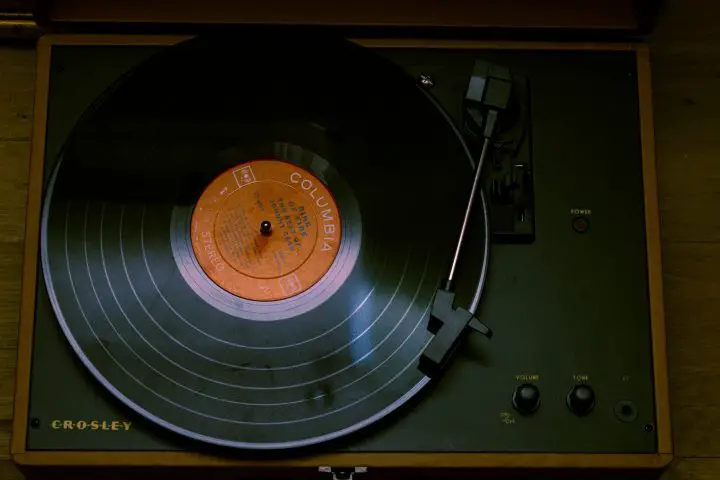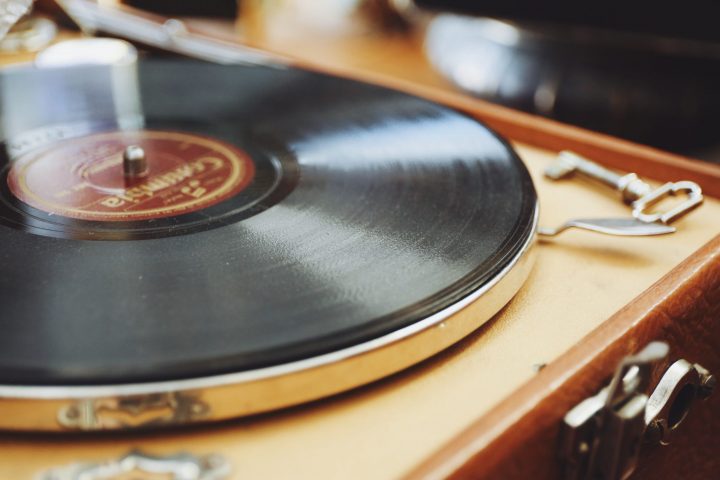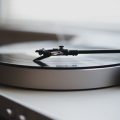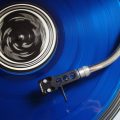We need to look no further than the end of our noses to see that there is undoubtedly a vinyl resurgence occurring throughout the Western world. Whether this be for nostalgia’s sake, or whether the ritual of putting on a record is something the listener more closely identifies with, it seems the new vinyl boom of this century is here to stay for at least a while.
In a time when digital streaming threatens to completely dethrone a whole host of independent artists, it seems the new vinyl boom couldn’t have come at a more apt time, though there are of course down sides to all things.
Since newer and younger vinyl record collectors are further and further removed from the original cultural moment when vinyl record collecting was relevant, they are also more and more removed from the professional guidance on how to maintain one’s stereo setup, which at the time would have proliferated in popular culture, at a loss when their record player not spinning as it should.
It is hoped that with resources like this, newer vinyl record collectors will be equipped with the knowledge they need to go out and make vinyl record collecting their own, not at the expense of fidelity or the holistic listening experience.
Table of Contents
- Types of Turntable and their Mechanisms
- Why is Your Record Player Not Spinning?
- How to Remedy a Record Player Not Spinning
- Final Tones
- FAQs Record Player Not Spinning

Types of Turntable and their Mechanisms
What can appear to be a wholly ubiquitous medium is in fact multifaceted and varied. The turntable, once investigated underneath, is a wholly magnificent thing, both complex and simple, and coming in a host of different styles and mechanisms, with two taking prime precedence in the commercial realm. Pop open the hood of any turntable and you are more than likely going to come across either one of these turntable mechanisms beneath, so if you know how they work you’re more likely going to be able to remedy your own record player not spinning as it should.
Belt Drive Turntable
Some turntables have an electric motor mounted within their main body that is connected to a rubber belt, a literal fusion of the digital and analog. The inner motor, powered by electricity from the plug, turns the rubber belt which, connected to the platter atop, spins the disc at the desired speed. To change the playback speed is simply to change the input to this motor, and how quickly or slowly it spins.
There is much contention among vinyl record collectors and enthusiasts as to the relevance of a belt drive turntable in this modern age of electronic means. Many would be tempted to err on the side of the modern, though, with such an antiquated format of listening to music, this seems a little backward.
Belt drive enthusiasts would be inclined to think inversely, to tell you that the addition of a belt drive, made as it usually is of rubber, actually dampens extraneous vibrations, absorbing the shock of vibrations from outside sources. This is particularly useful if your listening environment isn’t exactly the most sanctimonious atmosphere or if you are constantly hosting visitors who are less than considerate of the sensitive nature of the turntable at work.
The rubber belt drive thus absorbs the shock of these outside factors, preventing as best it can the transmission of the extraneous vibrations to the spinning of the turntable platter, reducing the occurrence of skipping caused by said vibrations.
Direct Drive Turntable
More modern models of the turntable, on the other hand, use a similar internal mechanism, though one that altogether negates the rubber belt, which some consider simply too antiquated for their needs. So, instead of a rubber belt acting as the intermediary between the motor and the spinning of the turntable platter, the motor is, in the case of direct drive turntables, connected directly to the platter itself.
This has various benefits in contrast to the belt drive turntable. A central pull of using a direct drive turntable instead of a belt drive turntable is the fact that the former has far more accurate control over the speed of the turntable; speeds will be more consistent for the platter though with the obvious downside of added vibrations, what with the lack of a rubber belt to absorb the shocks.
However, the direct connection between the motor and the platter means that the direct drive turntable is perfect for immediate reverse playback, and thus good for scratching as popularised in classic hip hop sounds. It is fairly common to find these kinds of drives on turntables used by professional disc jockeys who are looking to affect the spinning of the turntable more accurately for musical effect.
Needless to say, these vibrations can have a vastly detrimental effect on the sound quality, distorting the fidelity and even skipping over whole chunks of the record if the vibrations are strong enough.
Why is Your Record Player Not Spinning?
Just as there are different types of turntables on the market, so too are there various reasons to explain why your record player not spinning as it should, though these will tend to boil down to the same few. Remember, however, that each vinyl record collector’s circumstances will be different, so try to assess the wants and needs of your own turntable with a clear head, judging each on its own terms.
Outlined below are the various common reasons that there might be for a record player not spinning, though these are of course not exhaustive, and if you find none of these relevant to your own turntable ills, don’t be afraid to do more research or to seek the help of a trusted and licensed professional.
More often than not these issues are fairly easy to resolve, as you will see, though their repair can very easily go wrong, so I would suggest proceeding with caution if you don’t want your precious turntable to get hurt.
Issues with the Tonearm / Stylus
Often with older manual record players, what is called the tonearm or the stylus needs to be reset from time to time. Since the movement of the turntable platter is intrinsically linked to the placement of the tonearm and vice versa, this makes perfect sense and shouldn’t take much time, effort, or know-how whatsoever.
For many manual record players, the tonearm clicks off when the record ends. When this happens, the record player will not spin again until the tonearm is reset. A very quick fix is simply to reset the tonearm to its original position. This is a very easy mistake to make, particularly if you are new to vinyl record collecting or are simply more familiar with more modern turntables, and just as easily remedied.
Issues with the Belt Drive
For all its benefits with regard to the absorption of vibrations, the belt drive turntable is certainly not without its cons. Being just a thin length of rubber in a circular band, the belt drive isn’t exactly the most structurally sound engine component, very easily falling prey to the eventual fate of all machine components, hurled onto the great cosmic waste pile at the edge of the industrial revolution.
This fate can come in a variety of guises: the rubber belt might be too tight to begin with and thus quickly wear out against the various cogs and mechanisms inside the turntable, causing too much friction against the internal motors which they can’t overcome; the belt can also be too loose, too slack, meaning the belt itself cannot exercise enough grip on the motors to enact a sufficient amount of tension on the turntable spinning, from the motor to the platter.
Similarly, a drive belt might simply, through seeing lots of use, wear down of its own accord, without there being anything inherently wrong with the rubber belt itself. In these cases, it’s very common for the rubber belt to either lack the adequate friction to properly turn the platter and the disc atop or simply to be cut altogether, in dire need of a replacement.
Issues with the Direct Drive
The reasons for a record player not spinning ought not to be chalked up solely to the belt drive turntable, no matter how antiquated a piece of technology it may seem. The direct drive turntable, in fact, comes along with its own set of problems, some of which have already been elucidated above.
In eliding the belt altogether, there is a more complex relationship between the drive motor and the turntable platter, no intermediary being present to negotiate between the two. Very often, contact between the motor and the platter itself can come to a complete standstill. Halts in communication between the two are caused more commonly by technological and mechanical jams.
Since this is inherently a more complex mechanism, I would not recommend involving yourself too deeply with the inner mechanisms without the help of a licensed professional, for tinkering and fondling the inner workings in this way could very easily damage the turntable beyond repair, especially painful when it might only have needed a little help beforehand.
Issues with the Motor
Seeing as there is almost always going to be a motor no matter what kind of turntable you are using nor what kind of mechanism fuels the inner workings of the said turntable, issues with the motor and the record player not spinning that can affect almost any kind of turntable or turntable mechanism you are likely to come across, regardless of whether it is powered with a belt drive or a direct drive.
This inner motor can very easily become blocked for all manner of reasons, stopping in its tracks until someone sees fit to open it up and show it some love. The motor shaft within, which connects the motor to the platter, can become encumbered with various substances that form to produce insurmountable gunk, composed of dust, oil, skin, and various other unimaginable pieces of micro nuisance.
Since the motor is also the primary conduit for the electrical power going into the turntable, many issues relating to faults in electrical power can also stem from this very part of the mechanism. Thus, if the turntable in question is burdened with a damaged fuse, then this is likely going to manifest in the motor itself, which won’t be moving as a result of the faulty fuse.
Likewise, this same issue can arise as a result of a faulty switch, or any other variation of a faulty electrical conduit, so it is worth testing all of these possibilities before taking any drastic action.
How to Remedy a Record Player Not Spinning
Now that you have more of an idea of just how we might find a record player not spinning, let’s get to work on some solutions to your problems. Many of these will be in direct response to those reasons elucidated above, so feel free to check those out first and use your intuition, making sure to seek the advice and guidance of a licensed professional whenever appropriate.

Ensure Power is On and Stable
This might seem a little ridiculous, but it can be very easy to start panicking that our things are not working when they are simply not plugged in. We have all been there, and it is very easy to accidentally disconnect a plug from a socket; in fact, it’s easier to unplug from a socket than it is to plug in! Thus, establishing a positive and secure connection between electrical power and the turntable in question is a logical first step, for the turntable will not work whatsoever without an adequate power supply.
The solution to your record player not spinning might be far simpler than you previously thought, so make sure you are plugging the turntable into a working socket with a correct plug, etc, and that the turntable is switched on if applicable.
Adjust and Reset the Tonearm
As elucidated above, there are older, more vintage turntables equipped with tonearms that will, if left without resetting, not playback as desired. A turntable equipped like so will require a reset at the end of each record. Simply take the tonearm and push it to the right, to the edge of the record ring, past its usual resting place. There you should hear a clear clicking sound, signifying that the tonearm has indeed been reset.
If this was indeed the issue and the tonearm simply needed resetting, then the turntable should be working perfectly fine now and you should have no further worries. If the tonearm has reset and there are still issues, then there have accumulated various other issues which will be addressed below.
Adjust the Belt Drive
As previously discussed, the belt drive of a turntable can be either too loose or too tight, whether of its own or through consistent use, and, thus, will need adjusting from time to time. The room for error is particularly slim in the world of audiophilia, so any negligible amount of slack or tautness can be a deciding factor.
A loose belt can sometimes be fixed by boiling the belt briefly, which will cause it to shrink back to its original size. For belts with just a slight bit of slack, some talcum may be rubbed on the belt and shaft to restore a decent amount of friction.
More simply, the belt might simply have come loose and no longer connects the motor to the platter, in which case it will simply be a matter of replacing the belt drive to its original position.
Replace the Belt Drive
If the rubber belt is too worn through, too loose, too tight, or otherwise in disrepair, it can be more fruitful to replace the belt altogether. Not just any belt will do, however, and you should seek a belt that is going to fit your turntable most accurately without any adjustments.
If you still own it, the manual for the turntable will be of great use at this stage and should contain information about the kind of rubber belt you require. If a manual is unavailable, it may help check the manufacturer’s website for details on the exact model and search for belts confirmed to match it – the internet has made research like this a real breeze.
Inspect the Direct Drive
For a turntable equipped with the opposite mechanism, the direct drive, there will be other reasons for the record player not spinning. You will, thus, need to inspect the motor shaft itself to clean it of any debris, gunk, dust, etc that might be clogging the inner mechanisms.
In opening up a direct drive turntable, the steps are very similar to that of a belt drive turntable, though there’s a magnet assembly at the bottom of the platter. The platter should be lifted as carefully and evenly as possible to prevent damage to it. Once inside, simply clean carefully all of the elements inside, including the speed and pitch adjustments, the motor itself, as well any other parts you deem relevant.
Inspect the Platter
It’s not uncommon for the platter of a direct drive turntable to, in fact, jam against the casing of the turntable itself, resulting in the record player not spinning. The platter can easily shift out of place and come into contact with the sides of the turntable, resulting in friction and the ceasing of motion.
The platter should be carefully lifted out, examined for damage, and then placed back gently into its place, taking care to align it properly as required for smooth functioning.
Final Tones
So, there you have it, a comprehensive and, I hope, helpful guide to navigating your record player not spinning. If none of these solutions has been of use to you then it might be time to either enlist the help of a licensed professional or simply to purchase a new turntable altogether. However, never do so before exhausting every possibility.
FAQs Record Player Not Spinning
How do I fix my record player not spinning?
The first step to fixing any record player and turntable is to assess what exactly the problem is. Though there are a whole host of reasons for a record player not spinning, these tend to boil down to a certain few. Once you have checked that the power is properly connected, proceed to inspect the inner mechanisms: checking the sanctity of the rubber belt if it is a belt drive turntable, or the motor of a direct drive turntable, and so on through each individual element until they are deemed to be ship shape.
How do I get my record to spin?
Once you have checked that the power is properly connected and this still isn’t making the turntable platter spin, proceed to inspect the inner mechanisms: checking the sanctity of the rubber belt if it is a belt drive turntable, or the motor of a direct drive turntable, and so on through each individual element until they are deemed to be ship shape.
Why is my Crosley record player not spinning?
Once you have checked that the power is properly connected and this still isn’t making the turntable platter spin, proceed to inspect the inner mechanisms: checking the sanctity of the rubber belt if it is a belt drive turntable, or the motor of a direct drive turntable, and so on through each individual element until they are deemed to be ship shape. If it still isn’t spinning, then it could be worth enlisting the help of a professional, though Crosley’s are so cheap and ill-equipped for hi-fi playback that they will more than likely laugh at you.
How do I reset my turntable?
There are older, more vintage turntables equipped with tonearms that will, if left without resetting, not playback as desired. A turntable equipped like so will require a reset at the end of each record. Simply take the tonearm and push it to the right, to the edge of the record ring, past its usual resting place. There you should hear a clear clicking sound, signifying that the tonearm has indeed been reset. If this was indeed the issue and the tonearm simply needed resetting, then the turntable should be working perfectly fine now and you should have no further worries.





